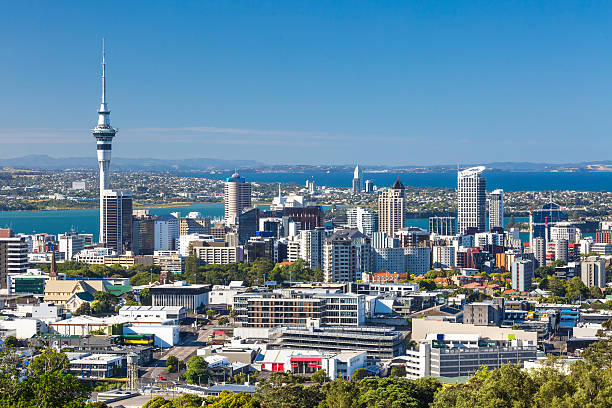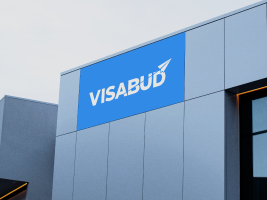Romania Travel Guide: All you need to know to visit Romania in 2025
Welcome to Romania
Welcome to Romania
Romania is one of the biggest and busiest countries in Eastern and Central Europe. Bucharest, the country’s capital, the Danube River, the Black Sea, Dracula’s Castle, the Carpathian Mountains, Transylvania, and many more places are popular tourist destinations. Our comprehensive Romania travel guide provides helpful advice and suggestions to help you prepare more efficiently and enjoyably.
Document checklist for Romania
- Visa
- Valid passport
- Sufficient funds
- Return tickets
Essential Romania travel information
Currency – Romanian Leu/Lei (RON). $1 is equivalent to approx. RON 4.60.
Daily budget for 1 person – RON 306 ($66).
Languages – The official spoken language is Romanian.
Socket type – Types C and F. Romania operates on a 230V supply voltage and 50Hz.
Time zone – Eastern European Standard Time (GMT+2).
Top 3 cities to visit – Bucharest, Brașov, and Sighișoara.
The top 3 landmarks/monuments are Danube Delta, Bran Castle (Dracula’s Castle), and the Sphinx.
Visa information for Romania
Although it belongs to the EU, Romania is not a part of the Schengen Zone. Nevertheless, many nations do not require a visa to enter Romania for tourism, making it very simple. However, certain countries must have a visa to enter Romania.
Typical costs and budget for Romania
Daily spending per person – 297 RON ($64) on a budget vacation.
Meals – RON 104 ($22) daily.
Transport – RON 79 ($17) daily.
Hotel – RON 114 ($25) per night for a double room.
One week of inexpensive travel can cost RON 2,079 ($448) per person.
Transport and best ways to travel around Romania
Trains, buses, vehicle rentals, domestic flights, taxis, and other forms of similar public transit are just a few ways to move about Romania.
The nation has an extensive, reasonably priced train system that connects the whole country. Due to this, trains are among the most popular ways to get across Romania.
Bus connections between Romania’s major cities and well-known communities are available from various bus operators at reasonable prices. On Autogari, you may look for bus, coach, and minibus maxi taxi timetables.
The most significant way to experience Romania’s most distant regions may be by car. This is because the roads are signposted and kept up.
Safety in Romania
Although Romania is generally a reasonably secure destination for travelers, occasional minor crimes can occur, mostly in major cities like Bucharest. We will provide you with some general safety advice:
- A popular scam involves thieves posing as cops and demanding to see your ID and pocketbook.
- Try only using ATMs at banks, stores, or malls late at night.
- Pickpockets may be drawn to crowded areas, so be cautious with your possessions and, if feasible, store essential papers in a safe deposit box at your lodging.
- Use well-known, reputable taxi services or popular ride-sharing applications to hail a cab. To get a set fee in advance for taxis, attempt to haggle or confirm that the meter is operating correctly.
- Avoid taking food or beverages from strangers when out partying or experiencing the nightlife. Always double-check your receipts.
- Lock your compartment and watch your stuff if you’re taking a train overnight.
- Travel from Romania to Ukraine or border areas should be avoided due to the unstable security situation surrounding the Russian invasion of Ukraine.
Weather in Romania
There are four different seasons in Romania’s moderate climate:
Summer: The temperature can soar. The days are incredibly long and bright.
Fall: Like many European nations, fall brings colder temperatures and rain.
Winter: Dress warmly, especially if you’re going somewhere with mountains. Snowfall is abundant from December until mid-March.
Popular Cities and Towns in Romania
Bucharest is a bustling city nowadays. An excellent place to begin your journey!
Among Romania’s most beautiful and famous cities is Brasov, situated in the country’s center and encircled by the magnificent Southern Carpathian Mountains.
Known as the 2007 European Capital of Culture, Sibiu, a city in Transylvania beside the Cibin River, welcomed tens of thousands of visitors. In the nearby Fagaras mountains, there are several hiking and skiing destinations.
Must do and see in Romania
Transylvania is a region of Romania situated on the country’s western edge, close to the borders with Hungary and Serbia. It is home to three of Europe’s best-preserved medieval cities, including Brasov, Sibiu, and Sighişoara, as well as spectacular castles like Corvin and Bran.
Trekking, hunting, horseback riding, fishing, and mountain climbing are just a few of the exciting visitor activities available in this area, thanks to its high peaks and distinctive scenery.
Lasi, the capital of Moldova, is situated in Northeastern Romania between the Prut River and the Carpathian Mountains. Bucovina is a region that is part of Moldova. Numerous significant museums and the Neo-Gothic Palace of Culture may be found there.
Typical Romanian food to try
Cheeses from Telemea and Cascaval, smoked meats, cold cuts, and vegetables are typically served as appetizers and the traditional beverage ţuică.
Main courses – Soups such ciorbă de perişoare (meatball soup), ciorbă ţărănească (vegetable soup, with or without meat), and ciorbă de burtă (tripe soup) are among of Romania’s greatest comfort meals. Seafood dishes are also well-liked, including grilled mackerel, grilled Black Sea sturgeon, and grilled carp in brine.
Vaccine information for Romania
Before going, it’s crucial to know the usual vaccinations and COVID-19 precautions needed to enter any EU nation, including Romania. We advise you to visit the CDC website to learn about all entrance requirements for vaccinations and any suggested advice or medication lists. A local doctor should always be consulted before leaving.
Fun facts about Romania
The Latin term “Romanus” (which means “citizen of the Roman Empire”) is where the name Romania originates.
Transylvania, a country beyond the forest, adds to the area’s mystique.
Trajan’s Column is one of the most emblematic structures that endured the demise of the Roman Empire.
Related Articles

5 min read
New Zealand Introduces Key Changes to Post Study Work Visa : What You Should Know
According to the government, this change will provide students with greater flexibility in their academic choices while ensuring they remain eligible to work. For many students, studying abroad is a
Read More
5 min read
The Singapore visa processing time for Indian citizens
Singapore is a small island located in the Malay Peninsula in Southeast Asia. It is one of the most economically developed countries in the world. Singapore is a fantastic place
Read More
5 min read
How Much Does an Australia Trip Cost from India?
If you are planning a trip from India to Australia, you must follow some of the points. that are : Planning Budget Traveling date and time To which place you
Read MoreYes. Before entering the Republic of Romania, Indian nationals must get a visa. Visas to Romania must be sought at the Indian Embassy in Bucharest. The kind of visa you’ll need to enter Romania will depend on several things, including the duration and purpose of your trip.
Romanian visas typically last up to 90 days from the date of issue. Therefore, if you haven’t stayed more than 90 days in the 180 days before arriving at the border crossing point, you will be allowed admission for the length indicated on the visa sticker.
Three months before the planned trip date is the earliest time to apply for a visa to Romania. It is advised that all visa applications be filed at least twenty days before departure to enable enough time for visa processing.
Taxes are not included in the visa fees for Romania, which are subject to modification upon notice by the embassy.
